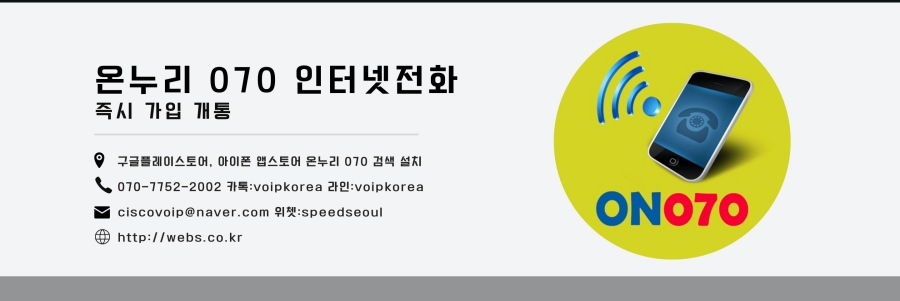스마트폰앱
- 전화 다이얼러
- 모바일 VOIP
- 안드로이드 프로그램
- 아이폰 앱 프로그램
- 네트워크 프로그램
- JAVA 자바
- UI DESIGN
- android JNI
- http post get
- 휴대폰 해외로밍

 카톡
카톡
라인상담
라인으로 공유
페북공유
◎위챗 : speedseoul

http://stackoverflow.com/questions/13744565/android-device-id-confusion
http://en.wikipedia.org/wiki/Mobile_equipment_identifier
IMEI
The IMEI is the 'MAC' for the telephony module - the unique ID that the telephone uses when it connects via GSM/GPRS/HSPDA/etc. The GSM network uses it to route calls and data from the phone over the GSM network right up to the gateway into the Internet (which is an IP network).
A telephony module is a chip or circuit board that handles the telephone network, either GSM or CMDA, and often has a slot for a removable SIM card. Some phones have more than one telephony module (active dual- or multi-SIM phones). Each telephony module has its own IMEI.
Manufacturers give each phone (strictly the telephony module) a unique IMEI during manufacturing. However the number can normally be rewritten if you have the right software. This is often done after a phone has been stolen to give the phone a new identity and bipass stolen phone blocking system.
The IMEI can be programmatically obtained using the TelephonyManager.getDeviceId() API.
CDMA phones have a ESN or MEID which are different lengths and formats, even though it is retrieved using the same API.
Android devices without telephony modules - for example many tablets and TV devices - do not have an IMEI. As Schlangi commented, some devices that do not have a telephony module fake the IMEI, so the presence of an IMEI does not (always) guarantee the device has a telephony module.
ANDROID_ID
The ANDROID_ID is another unique number on the phone - this is automatically generated by the OS as it boots for the first time (doing it this way makes it much easier for the manufacturers by removing a step from the production line).
The ANDROID_ID can (and does) change, for example:
- Factory reset (including when reflashing the OS)
- In software: eg https://play.google.com/store/apps/details?id=com.vcastroi.changeid
It is mainly used by developers (eg identifying and connecting to devices using adb)
ANDROID_ID can be used to identify an Android device given the caveats above, realistically meaning that it uniquely identifies the device over significant portions of the device lifetime, but cannot be relied on.
Also note that there was a bug in Froyo where many devices gave themselves the same ANDROID_ID. This is the bug
Other identifiers
There are a number of other things that can be used identify the device:
- MAC address of the WiFi module: WifiManager.getConnectionInfo() -> WifiInfo.getMacAddress(). This can often be changed in software, but generally is constant over the device lifetime. Also it can only be read if the WiFi module is switched on.
- MAC address of the BlueTooth module: BluetoothAdaptor.getAddress(). Like WiFi MAC, this can often be changed in software and may be off when you need it
- The subscriber's telephone number. This may change if the user requests a new number from the telco, or if the user switches SIMs. It is obtained from TelephonyManager.getLine1Number(). This is only present for Android phone devices with a current SIM installed and a paid service with a telco.
- The SIM contains its own identifying number (IMSI). This is obtained from theTelephonyManager.getSubscriberId() API. Obviously the SIM may not be present at any specific time, and it changes when the SIM is changed - and users can upgrade/replace their SIM while keeping the same number, so you can't say that this is one-to-one to a specific phone or user.
- Related to the IMSI is the MSISDN. This functions as the identification of a subscription (your contract for a specific telephone number with your mobile provider) and therefore gives the device its telephone number. The MSISDN may be associated with several SIM cards, and therefore several phones. It comes with all the caveats for reading the SIM above. This may be retrieved withTelephonyManager.getSimSerialNumber(). Thanks Schlangi for the corrections and additions
- Gingerbread and later has android.os.Build.SERIAL which many manufacturers set (but not all. Bugger).
Other notes
There are some approach to get unique identifier on android phone.
Android ID It is a 64-bit hex string which is generated on the device's first boot. Generally it won't changed unless is factory reset.
Secure.getString(getContentResolver(), Secure.ANDROID_ID);
The Android ID , considered unreliable because it can sometimes be null. The documentation states that it "can change upon factory reset". This string can also be altered on a rooted phone.
String m_szAndroidID = Secure.getString(getContentResolver(), Secure.ANDROID_ID);
Returns: 9774d56d682e549c . No special permissions required.2. The WLAN MAC Address string, is another unique identifier that you can use as a device id. Before you read it, you will need to make sure that your project has the android.permission.ACCESS_WIFI_STATE permission or the WLAN MAC Address will come up as null.
WifiManager wm = (WifiManager)getSystemService(Context.WIFI_SERVICE);
String m_szWLANMAC = wm.getConnectionInfo().getMacAddress();
Returns: 00:11:22:33:44:55 (not a real address since this is a custom ROM , as you can see the MAC address can easily be faked).
WLAN doesn't have to be on, to read this value.3. The BT MAC Address string, available on Android devices with Bluetooth, can be read if your project has the android.permission.BLUETOOTH permission.
BluetoothAdapter m_BluetoothAdapter = null; // Local Bluetooth adapter
m_BluetoothAdapter = BluetoothAdapter.getDefaultAdapter();
String m_szBTMAC = m_BluetoothAdapter.getAddress();Returns: 43:25:78:50:93:38 . BT doesn't have to be on, to read it. 4. IMEI only for Android devices with Phone use:
TelephonyManager TelephonyMgr = (TelephonyManager)getSystemService(TELEPHONY_SERVICE);
String szImei = TelephonyMgr.getDeviceId(); // Requires READ_PHONE_STATEThis requires adding a permission in AndroidManifest.xml, and users will be notified upon installing your software: android.permission.READ_PHONE_STATE. The IMEI is unique for your phone and it looks like this: 359881030314356 (unless you have a pre-production device with an invalid IMEI like 0000000000000). For more info refer this link.


